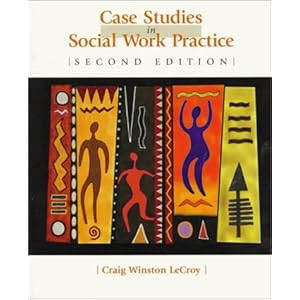About 'social worker studies'|Home Study Renewal - Getting ready for social worker visit
I am twenty years of age, I attend a well-known university, my grades are solid, and I rarely worry about money. I have a good number of friends, I find myself attractive enough, and at any job interview I can smile and cheerfully display the characteristics of a motivated, hard worker. To an outsider, I am a thriving individual whose development has progressed normally, and though I may experience the occasional upset, overall there is not too much I can complain about. In contrast to what one might expect given this apparently excellent adaptation to life, last summer I had to change my plans due to personal difficulties. As I began another summer working at a small summer camp that I had attended and loved since I was nine years old, I found myself plagued with the symptoms of my post-traumatic stress disorder. This disorder began after an event I experienced nearly a decade ago, when a stranger on the street attacked me with a knife. Through intensive therapy and the support of my parents, I have worked hard to make my panic attacks and nightmares subside. For many years I remained functional in the sense that I rarely missed classes and maintained strong friendships with a number of peers. Nonetheless, because this camp was also the site of a second attack the summer before (the significance of which I had minimized), the panic attacks came back in the most debilitating form I had ever experienced. I was forced to abandon my role as a head counselor and run away to Ithaca. In light of the accumulating research on the term "resilience," I have wanted to relate these findings to my own experience. However, the process of doing so has not been simple. Masten (2001) defined resilience as a "class of phenomena characterized by good outcomes in spite of serious threats to adaptation or development" (p. 228). According to Masten, one of the fundamental assumptions that this concept relies on is that a risk must be posed to the individual with the possibility of a negative outcome due to the risk. In this regard, one could certainly consider my experience to qualify as a potential risk factor. Werner (1996) suggests that there are three types of risk: risky environments that one might grow up in, sustained conditions of stress, and concentrated childhood traumas. The latter seems to describe my experience, since I was attacked at a vulnerable age and feared for my life. However, although this experience has put me at risk for negative developmental outcomes, it is not clear whether or not I should be categorized as "resilient." Masten (2001) speaks of "good outcomes" (p. 228) in her definition of resilience. Studies on resilience discuss such outcomes as including being well liked by others, having a reflective cognitive style, being caring of others, enjoying school, and possessing the ability to regulate one's emotions (Werner, 1996). But what if one shows some of these possible qualities, and not others? Masten (1999) alludes to the controversy surrounding how we evaluate and define resiliency, arguing that it is not obvious who should define what is considered a "good" outcome and what is not. In this regard, a question occurs to me concerning those who demonstrate a majority of these positive outcomes. In these cases, despite the fact that these qualities are present, can we assume that the developmental trajectories we see are wholly positive? It is based on this last question that I believe a key argument lies: there may be a part of the population that is neglected in the literature on resilience. This subgroup is one that has experienced risk and probably has a number of what the literature notes to be the most prevalent protective factors in countering this risk. Members of this group exhibit positive developmental outcomes, and as a result are deemed to be "resilient." However, what separates this group from other "resilient" survivors is that these people may not in fact be resilient; they may only appear to be so because they have been socialized to be compliant or they have used work or school as an outlet for their negative feelings. Thus, one might be productive in class because of the use of work to distract oneself from painful or frightening feelings. Failing to act out through external means (via drug use, delinquent behavior, etc.) may reflect compliance to society and parental norms, rather than an intrinsic motivation to steer clear of risky behavior. Fergusson & Lynskey (1996) use a cutoff point based on the number of negatively external behaviors one exhibits in order to determine resiliency; if this is the case, what do we do about those who do not externalize their behavior? Brown (2005) explored the world of the white, middle-class girl - a girl who could likely become a member of this neglected subgroup. In her study, Brown compared a group of low-income female students with those who fell into the middle socioeconomic range. As she worked with these students, Brown noticed that while the lower-income girls tended to show their feelings outwardly and misbehave, the middle-income girls had been socialized to hide their emotions as they strived to work well in school. Although resiliency was not a concept that was explored in Brown's study, one could hypothesize that girls in this group might be easily neglected by the research on resilience. Despite the possibility of adverse events, these middle-class girls would be expected to do well regards to school, having friends, and being well-liked, which would lead to the appearance of positive outcomes, even if some of the outcomes were not positive at all. As I read this article, I could not help but relate to these girls and wonder if I might fit into this subgroup. If this is the case, then it does not come as a surprise to me that I do not know whether or not to define myself as "resilient." In terms of the previously listed positive outcomes derived from Werner's (1996) work, with the exception of regulating emotions well, I seem to show all the signs of being resilient. Additionally, in regards to the resources available to me, Rury (2005) speaks of the importance of social, human, and cultural capital in promoting positive outcomes for children. It is clear that my socioeconomic status, education, and the supportive parenting I have had give me high amounts of these types of capital. Despite all these odds that are working in my favor, however, I still find myself having potentially debilitating experiences based on the risk factor I was exposed to. I work to hide my disorder from those around me, out of fear of being perceived as a less able member of society. Furthermore, while my interest in learning is genuine, for many years in high school I struggled to keep distance from my feelings by becoming a hard working overachiever. Though I appeared resilient, inside I was suffering. My experience therefore provides possible evidence for the existence of a subgroup in our population that may be silenced in the research on resilience. Furthermore, my story highlights another possible question that may face all of those who are faced with risks: when do risks accumulate to the point where they become intolerable? Werner (1996) speaks of the "challenge model." In this model, a peak is reached at which risk factors cease to promote development and begin to impair it. It seems that the nature of this peak could have a dynamic interaction with the components of the environment it is situated in; for example, through therapy I began to find a way to make my traumatic experience manageable, but when I was exposed to memories of my second attack, the effects became debilitating. For one of the first times in my life, I began to show that I was not as resilient as I had portrayed myself to be: I needed to leave camp and escape. Is it possible, therefore, that the challenge model could be used to explain why these unrecognized voices in the resilience literature become unmasked? Can these voices only be heard when life becomes so hard that they are left with no choice? References Brown, L.M. (2005). In the bad or good of girlhood: Social class, schooling, and white feminities. In L. Weis & M. Fine (Eds.), Beyond silenced voices: Class, race, and gender in United States schools. Albany: State University of New York Press. Fergusson, D.M. & Lynskey, M.T. (1996). Adolescent resiliency to family adversity. Journal of Child Psychology and Psychiatry, 37, 281-292. Masten, A.S. (1999). Resilience comes of age: Reflections on the past and outlook for the next generation of research. In M.D. Glantz, J. Johnson, & L. Huffman (Eds.), Resilience and development: Positive life adaptations (pp. 282-296). New York: Plenum. Masten, A.S. (2001). Ordinary magic: Resilience processes in development. American Psychologist, 56(3), 227-238. Rury, J.L. (2005). Education and social change: Themes in the history of American schooling. New Jersey: Erlbaum Associates. Werner, E.E. (1996). Protective factors and individual resilience. In J.P. Shonkoff & S.J. Meisels (Eds.), Handbook of early childhood intervention, 2nd edition. Cambridge: Cambridge University Press. |
Image of social worker studies
social worker studies Image 1
social worker studies Image 2
social worker studies Image 3
social worker studies Image 4
social worker studies Image 5
Related blog with social worker studies
- ivythesis.typepad.com/term_paper_topics/A Study on Social Security to Workers in Informal Economy in...With this, this paper will study the issues behind social security to workers in informal economy in...
- nextspiller.blogspot.com/...excuse to bake right now!) Of course, when the social worker comes, it is not just a... we want to do in our home study.. and that is it. We are in...
- medfascism.blogspot.com/...the mental health team--teachers, all school personnel, counselors, social workers, psychologists, local police, pediatricians, general and family...
- witchy-woo.blogspot.com/...have feminists, we can have gender studies. So I think it’s really important that we... a vast distortion of a huge body of social science research that has been...
- conservativecorner-karen.blogspot.com/...to include the contributions of gays and lesbians in social studies curriculum. http://washingtonexaminer.com/news/2011/07/landmark-gay-history-bill-goes...
- witchy-woo.blogspot.com/...few weeks she was going to university to study. She wanted to become a children's social worker. Those four men destroyed all that...
- amrc-reviews.blogspot.com/American Workers - Series describes the rapid industrial... with the nonfiction American Workers Series - Triangle Shirtwaist Factory Fire and...
- memphiswinn.blogspot.com/...We had a meeting with the social worker last night. It got to the point where...Friday, then she finishes the home study. We have to track down the reference ...
- ohtheplaceswellgo.blogspot.com/...adoption stuff is done....the social worker's license expired--So, more...I have read. I belong to two bible studies. I taught at VBS. I ...
- rougeknights.blogspot.com/...for Obama, the Black Social Worker - as a lark! They already...Catholic church is big on Social Work, and have been...Negro Man! This film should be studied over and over. It shows...
Social Worker Studies - Blog Homepage Results
... invited to contribute information and resources about school social work, mental health in schools,child study teams, students and their families. This is public web...
This is my study guide for the Licensed Social Worker (LSW) exam, or more specifically, the ASWB Master's Exam. I will be primarily focusing...
...Thankfully we won’t have to wait too long. Our social worker went ahead and gave us her verbal approval of our home study today. (Yay!) Now she has to compile...
Related Video with social worker studies
social worker studies Video 1
social worker studies Video 2
social worker studies Video 3







0 개의 댓글:
댓글 쓰기